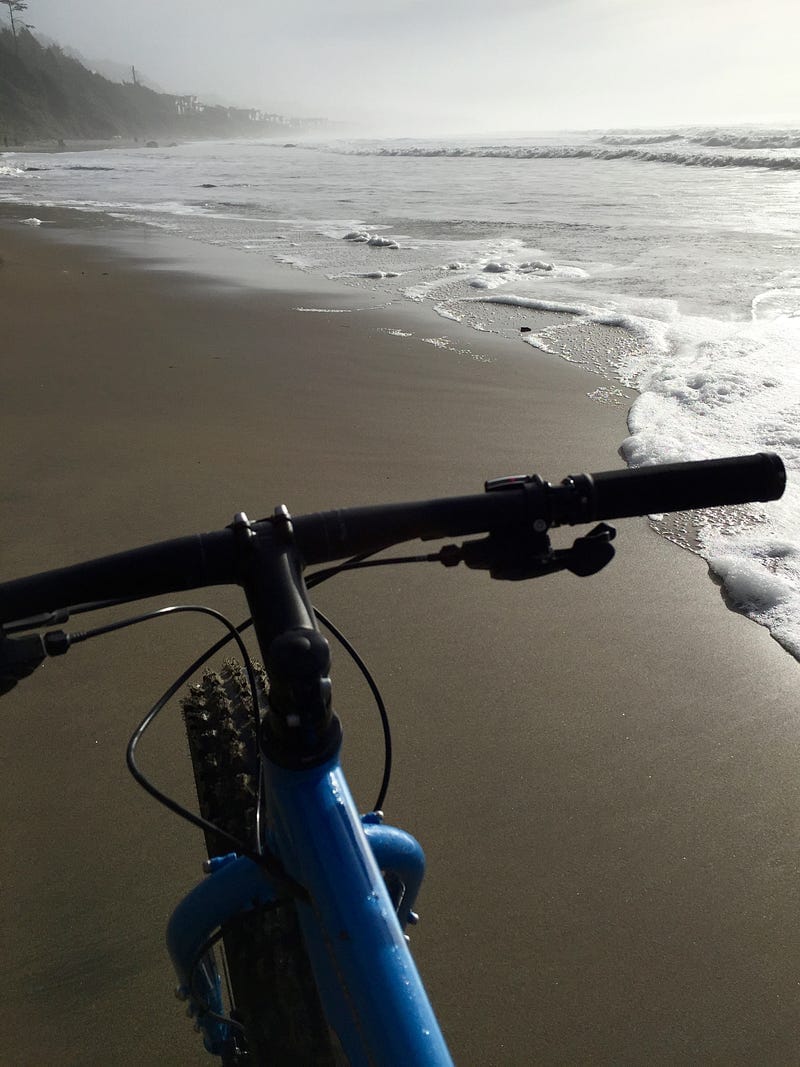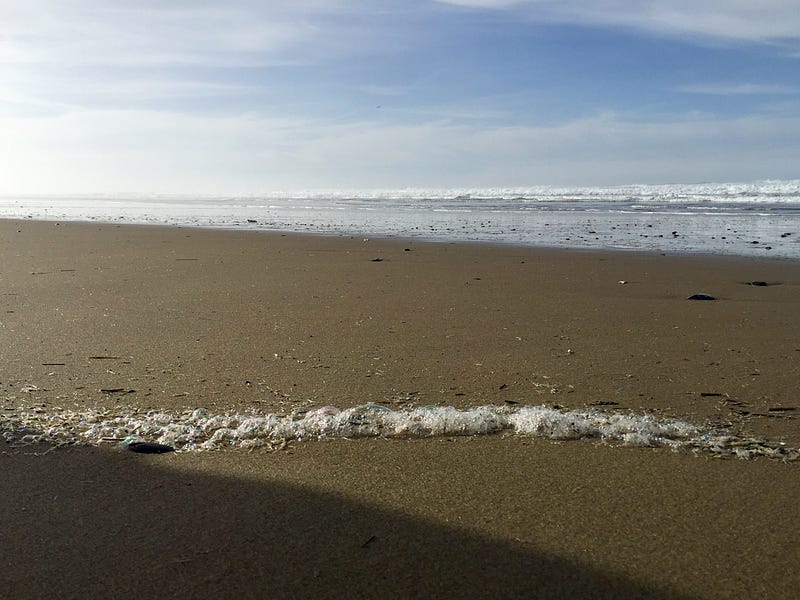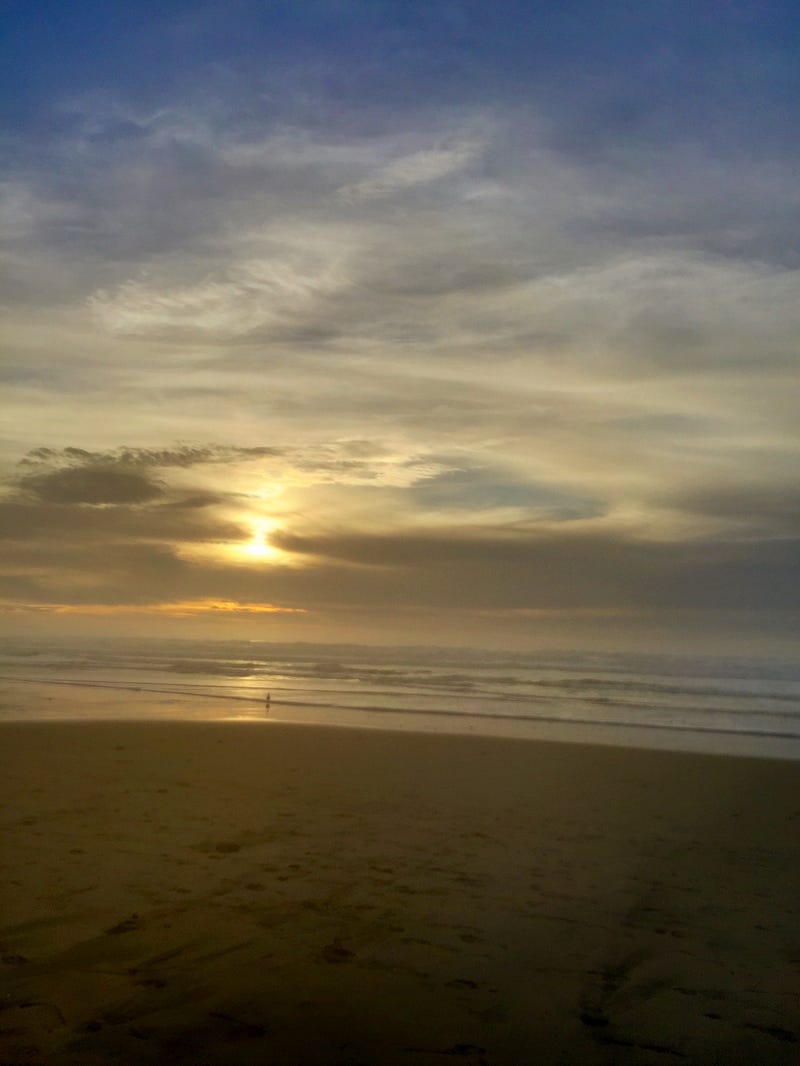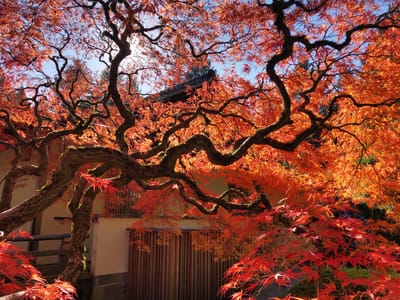Riding the Pacific Northwest Coast in January

Riding the Pacific NW Coast in January
Winter in Oregon is my least favorite time of year, because we tend to have gray, foggy, rainy days from November clear through April. When a friend asked my family to spend a weekend at their beach house, I didn’t have high hopes. I brought along my new Surly Ice Cream Truck fat bike thinking it might be fun to ride around on the sand even if the weather was horrible.
Much to my surprise, leaving the Willamette Valley we were greeted with blue skies and sunshine as we reached the coast just 50 miles from the cold gray place we started from. After a few hours of relaxing, I decided to explore the coastline around Lincoln City, Oregon on a Saturday afternoon.

The place I was staying was Roads End, a small bunch of beach cottages at the literal end of the road on the northern tip of Lincoln City, marked by a giant rock outcrop that marked the end of the beach. I rode up to it and realized the rock around here could only be ridden around at extreme low tides. I turned around and headed south, knowing the southern tip of Lincoln City was miles away, but I figured I’d probably get tired or bored or just find the beach impassible by bike at some point and return home on frontage roads if necessary.

The weather was uncharacteristically glorious, sunny, clear, and pushing 65°F, and I was enjoying every minute of it. As usual, people on the beach were flipping out about seeing a bike with giant tires go by as they walked. Kids would stop building sand castles to yell “Mom!!! Look at that!!!”, gearhead dudes would nod and say “whoa, nice ride!”, and older people would give me quizzical looks. Like I said in Issue #17 of Bike Hugger Magazine, fat bikes are machines that emit joy, both for the rider and everyone that encounters them.
As I rode south, I encountered a few challenges. At one point I had to ford a river as it meets the sea. I estimated it being less than a foot deep at the worst part, but I badly timed a wave coming up amid a rising tide and as soon as I started crossing it, the water level went above my bottom bracket, soaking my shoes and socks completely. I pushed through the water and tried not to think of what my crankset would look like later on.

The main challenge of riding on a flat beach for miles was picking the best line. You’d intuitively think you could ride a bike fastest and easiest where it is easiest to walk, which is usually the firmer wet sand down by the water line, but even on a fat bike with 5" tires, wet sand provided quite a bit of resistance. I found the fastest lines were usually in the drier sand higher on the beach, where a person walking would find it difficult but giant tires could easily float over. Maintaining a double-digit MPH speed on any sand surface was a lot of work though.

The biggest problem I encountered on my ride was dealing with downed and washed up trees near the end of my ride. There were spots on the beach where dozens of full-sized trees were strewn about, and for the most part I could ride in the surf to avoid them and I only had to dismount and climb over one once. I was frankly a bit surprised no rock outcrop or stack of trees blocked me on my ride and I ended up reaching the extreme southern point of Lincoln City after an hour of riding. The beach turned into Siletz Bay, and with nowhere left to ride, I turned around and headed back.

In all, I rode over 13 miles of coastline in a bit over two hours, and though the elevation gained was only 37 feet, riding a flat beach on a fat tired bike is fun, but quite a workout. It was a bit like riding a 2–3% grade for over two hours, with almost no coasting, no drafting, and definitely no downhilling. I also had to fight the dying light of a late Winter afternoon but the beauty of the impending sunset made it all worth it.
I didn’t know what to expect when I drove my fat bike out to the Oregon Coast in the dead of Winter. I figured even if it was awful, I could goof around and ride in circles on the sand, but instead I was treated to a long fun ride under glorious skies. In the end, I got a giant smile and a bit of a sunburn and a new appreciation for all the natural wonders Oregon has to offer.
Subscribe to our newsletter.
Be the first to know - subscribe today



